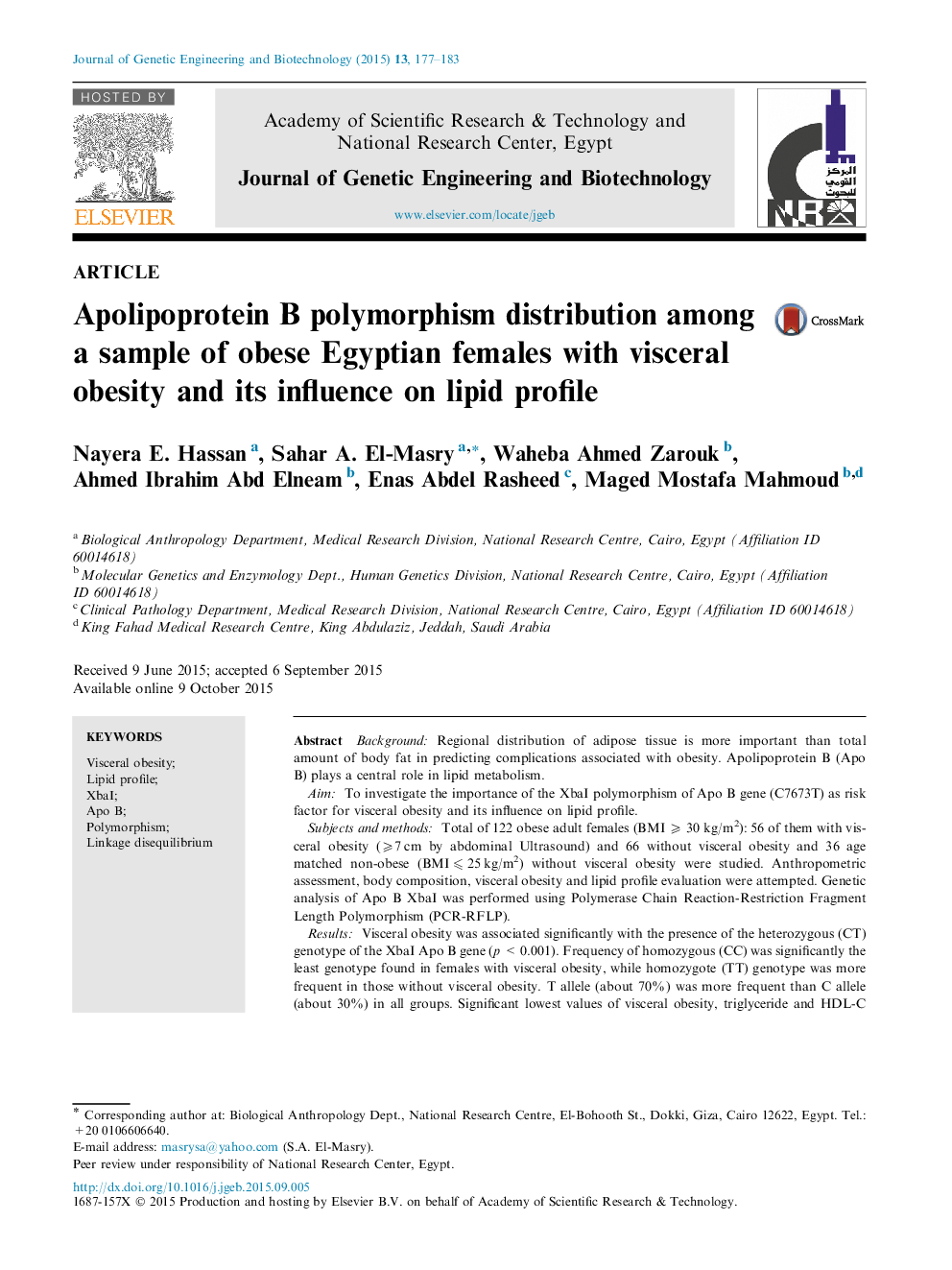| Article ID | Journal | Published Year | Pages | File Type |
|---|---|---|---|---|
| 2087866 | Journal of Genetic Engineering and Biotechnology | 2015 | 7 Pages |
BackgroundRegional distribution of adipose tissue is more important than total amount of body fat in predicting complications associated with obesity. Apolipoprotein B (Apo B) plays a central role in lipid metabolism.AimTo investigate the importance of the XbaI polymorphism of Apo B gene (C7673T) as risk factor for visceral obesity and its influence on lipid profile.Subjects and methodsTotal of 122 obese adult females (BMI ⩾ 30 kg/m2): 56 of them with visceral obesity (⩾7 cm by abdominal Ultrasound) and 66 without visceral obesity and 36 age matched non-obese (BMI ⩽ 25 kg/m2) without visceral obesity were studied. Anthropometric assessment, body composition, visceral obesity and lipid profile evaluation were attempted. Genetic analysis of Apo B XbaI was performed using Polymerase Chain Reaction-Restriction Fragment Length Polymorphism (PCR-RFLP).ResultsVisceral obesity was associated significantly with the presence of the heterozygous (CT) genotype of the XbaI Apo B gene (p < 0.001). Frequency of homozygous (CC) was significantly the least genotype found in females with visceral obesity, while homozygote (TT) genotype was more frequent in those without visceral obesity. T allele (about 70%) was more frequent than C allele (about 30%) in all groups. Significant lowest values of visceral obesity, triglyceride and HDL-C were associated with the presence of (CC) genotype and the highest values were associated with the presence of the heterozygous (CT) genotype; except HDL-C with (TT) genotype.ConclusionsStudy reveals considerable association of Apo B XbaI gene polymorphism with visceral obesity and some lipid profile parameters (TG and HDL-C) among Egyptian females.
